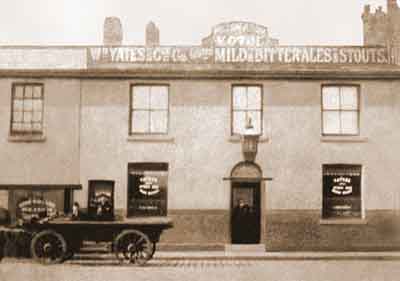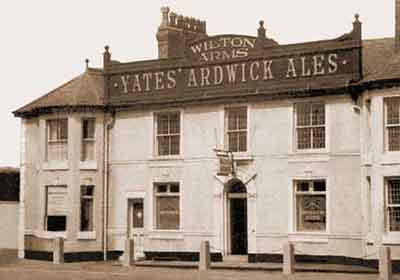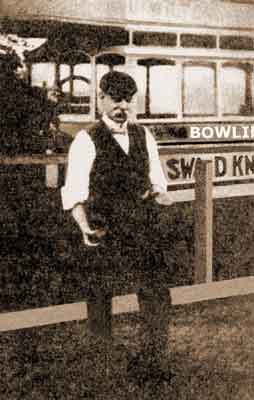Manchester Rd, Denton
The Wilton Arms was situated on Manchester Rd almost opposite Wilton Grove and both names commemorate the Earls of Wilton.
Architecturally, it was best defined more by its purpose and location than its style with an emphasis on providing an informal and friendly atmosphere.
A feature of interest was its long cellar that extended under some of the adjoining houses and was reputed to be one of the coldest in the area.
The Thirlmere Aqueduct, built by Manchester Corporation between 1886 and 1894, runs below Laburnum Rd, crosses under Manchester Rd and formerly skirted around the bowling green at the back and then along the north side of Manchester Rd to terminate at Audenshaw Reservoir No. 2 by Denton Golf Course.
Manchester Rd (formerly New Rd) dates from 1818, when the turnpike Rd was constructed, and the Wilton Arms was built at about the same time. Sometime in the 1890s it was acquired by William Yates & Co Ltd (later Yates Castle Brewery Ltd) of the Castle Brewery, Fairfield Street, Ardwick, Manchester. In 1968 it was demolished and its bowling green destroyed to make way for Manchester Rd being converted into a dual carriageway in preparation for the construction of the M67 motorway.


Right: The Wilton Arms in the 1960s shortly before demolition.

Wilton Arms, early 20th century.
Oswald Knight became the landlord in 1898 and as he was a keen sportsman he formed a bowling club and tournaments were regularly held on the bowling green at the back. He obtained an unwanted double-deck tram, with his name displayed on the side of it, for use as a pavilion by spectators.
He was born at Hulme, Manchester, on the 25 Nov 1854 to Dinah Knight and he married Mary Elizabeth Massey at St James’s Church, Didsbury, in 1882. They had three children, William (b.1885), Sarah Ada (b.1888) and Florence Ruby (b.1893), all born at Hulme. Oswald died at Denton in 1909, aged 54 years. Following his death his widow, Mary Elizabeth, became the landlord of the Wilton Arms and she was there until 1915.